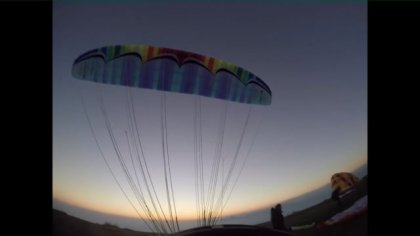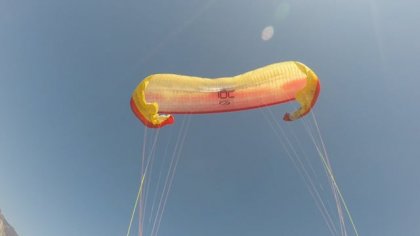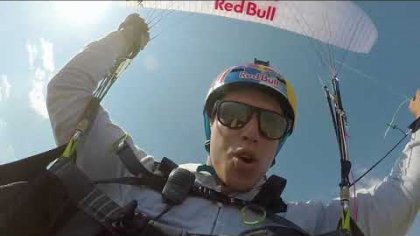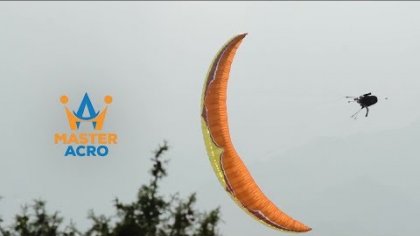12 years ago
The Monte Baldo rises nearly 1700 meters over the surface of Lake Garda and therefore is one of the very best training locations for aerobatics! Even with small acro gliders the maneuver box will be reached at 1000-1200 meters by just a simple glide. On a good day maximum 5-6 flights are doable, but everything above 4 rounds become really stressful.
Read carefully! This page contains lot's of essential information for safe flying at this site.
1. The ride up:
Access by cable car (http://funivia.it) starting from Malcesine. There are daily, weekly, monthly and seasonal passes. Every hour there is a tourist bus running along the shore that also has a stop at the landing place. The ride to the funivia costs 1 EUR each time. The cable car gets extremely busy during the entire summer season! Rush hours are in the morning between 9 and 12 pm. Try to avoid this period by buying your ticket early in the morning otherwise you may end up queuing a long time! Also avoid the rides reserved for bikes only! Another good trick of reach the peak faster: enter the bottom cabin as last but enter the second cabin at middle station as first and get close as possible to the door on the opposite side. This way you can save time and potentially make one last run before the cable car closes :)
2. The startplace
A huge grassy meadow with no obstacles at all, probably one of the best easily accessible ones on earth! The west side is kind of flat (towards the lake) and the east side is somewhat steeper (to the backside).
In the mornings the wind often blows from the east (the backside from the lake). If this is the case, walk towards the North end of the ridge and start from close to the end. You have to then fly left till the end and go around the mountain towards the maneuver box (see later) depending on the wind direction in the valley. Obviously you have to fly through the lee side of the mountain. Judge your skills, experience and the conditions accordingly (for experienced pilots with acro wings it will not be a big issue even in higher winds). But DO NOT START if the wind is blowing strong from the south! That is the case where the lee rotor will be very nasty!
Usually later as the sun comes around and heats the west side the wind turns and it will be possible to launch directly towards the lake. This is a lot better because the distance into the box will be a lot shorter more height for the maneuvers. Whenever the wind allows it you should start towards the west, even in light tail winds!
3. Conditions:
Sometimes in the mornings the east side will be soarable. But it is always a little bit turbulent! WARNING: even if the grassy slopes are really calling for it, but do not play with waga ticks too hard! The wind is never laminar enough, there will be always holes and turbulence that will drop you down rapidly! In the grass there are also many holes and small rocks hiding!
The Monte Baldo is somehow not a very good thermal mountain. You will often see XC pilots coming from the south (from Prado) and passing over the take-off pretty high when from here it is not possible to climb out. But every ones in a while magic happens and you can tank some extra height up before heading out.
4. The landing:
It is an artificially built grass field right underneath the mountain, 2 km north of Malcesine town. However it's size is decent it can get tight quickly when wind conditions are lower than expected. Still most people end up landing in the very back end of the field (or in the water directly behind) because they are afraid of overshooting but overestimate the wind at the same time. It is also tight when more than one are in the final stage of the landing. Watch out for beginners and give them the way as many of them often have no idea that you are also around! After landing bring your wing immediately to the side and pack everything there. If you ground-handle, put the wing down when someone is approaching to land. Remember: the landing is still technical for most and are many people flying here who's abilities are not good enough or they don't even know what they are doing! There are no other landing options available else than this field and some tiny rocky beaches (in the summer packed with tourist).
5. The winds:
This is extremely important to understand the local wind system here! Lake Garda is a legendary spot for sailing, wind-, and kite-surfing - for a good reason! Being one of the main valley systems that cuts deep north inside the big mountains the in, and outflow are both very powerful!
The outflow is called "peler" or "vento". It always blows from the north and is nearly always more powerful than the inflow. It picks up stronger from the second half of the night and is usually the strongest around sunrise. Depending on the day it may last till 9-11 or even longer. If there is a front coming or north-fohn situation it may even stay strong for the whole day (usually not flyable at all then). In some rare cases it remains calm in the morning. If you fly with peler/vento and the wind is strong (with white caps on the water) watch out for turbulence at the landing! With north wind the landing zone is in the rotor of a little corner directly ahead.
The transition: when the peler starts to drop the transition to inflow begins. This is the most tricky time to land because it may happen that the air is still moving from the north in the altitude but the south breeze is already entering in the lowest layer of air - maybe only the bottom 20-30 meters! However it may not yet be strong enough for you to see on any wind indicator (multiple ones located in the landing). Gentle tail wind can make the landing become too short very quick!
The inflow, called "ora": after the transition usually starts as a gentle breeze. It's later strength depends on thermal activity and the amount of sunshine in the mountains north of the lake. If there is a strong inversion it may remain calm. But if there are good thermals it will pick up to even 30 km/h reaching it's peak around 2-3 pm. It often happens that flying activity has to be paused. However with a small and fast acro glider you have a wider window to fly safely. But watch your drift...
In some weird weather situations I also experience the transition to happen within only a few minutes and the both winds from completely opposite directions were strong and entered quick!
(Note that the wind system of the lake a lot more complex and can only be truly understood with years of sailing experience on Lake Garda.)
6. Placement and drift:
The right placement has extreme importance when training here! The altitude over the lake is really high and the wind often blows quite strong. These factors together cause an unusually large drift through the training run. Flying the right route into the maneuver box and having the right placement for the maneuvers will provide you a lot more height for your tricks and also a dry and safe landing.
Many times you cannot know if the wind is still peler (north) or if already changed to the south. The landing place is not visible directly from the take-off, but it will be once you are airborne. Very important: immediately after take-off check the sailing boats directly left (south) of the landing place! They will show you the wind direction on the lake: all boats are fixed at their nose! This makes them face into the wind all the time. It is very easy to see even from up high which way the wind is coming from! So check on the wind and change your course immediately if necessary by heading upwind from the landing place. The stronger the wind the further upwind you have to move. If the boats are neither heading towards the north and nor to the south but are standing sideways this is the sign that the transition is just about to happen or is happening right now! Pick your landing direction very carefully!
Experienced pilots may adjust their placement by feeling the wind up high (this is tricky) but this is mostly not as significant as the wind down in the valley.
As guidelines use followings:
By vento (north wind): start your maneuvers in line with the north end of the mountain, the large curved beach of Campagnola (the only long beach 400 meters north of the landing place). There is a little half island coming out from the land right at the south end of this beach!
By ora (south wind): start your maneuvers in line with the little sailing boat port / parking place / ferry stop south of the landing place. But often even this won't be enough and you have to move even more upwind towards the castle of Malcesine. To get to the right position you have to fly towards Malcesine town instead of pointing towards the point. Don't underestimate the wind!
start your maneuvers in line with the large beach of Campagnola (the only proper beach north of the landing place).
7. Safety
An automatically inflatable life-jacket is an absolutely obligatory equipment here! Even for non-acro pilots!:
There are numerous SIV trainings ran here through the season. During these trainings there is a safety boat out the water or standby. If you plan to train at the same time with a course: be kind and let them know that you are there and may need their help to get you out of the water! This is way better then saying nothing but falling in and expect them to get you out...They may charge you 20-30 EUR but it is fair. The boat costs 250 EUR for a full day with the driver! But you can as well get a half price deal if the driver stays on shore waiting standby for some action to happen. I think for a small group of acro pilots this is a great solution! Otherwise there is nothing more than a human powered kayak that is not the best life saving tool when someone falls in far from shore.
I hope this is helpful for you guys, happy trainings!
Pal









Latest Comments
hi , do you now about fly winter in Garda? i am intrested too, i shell go december
There will probably be a lot of snow at the take of and the water will be dangerously cold (below 8 degrees). Also there will most likely be no boats to save you.
How is this place for winter months? December-March?